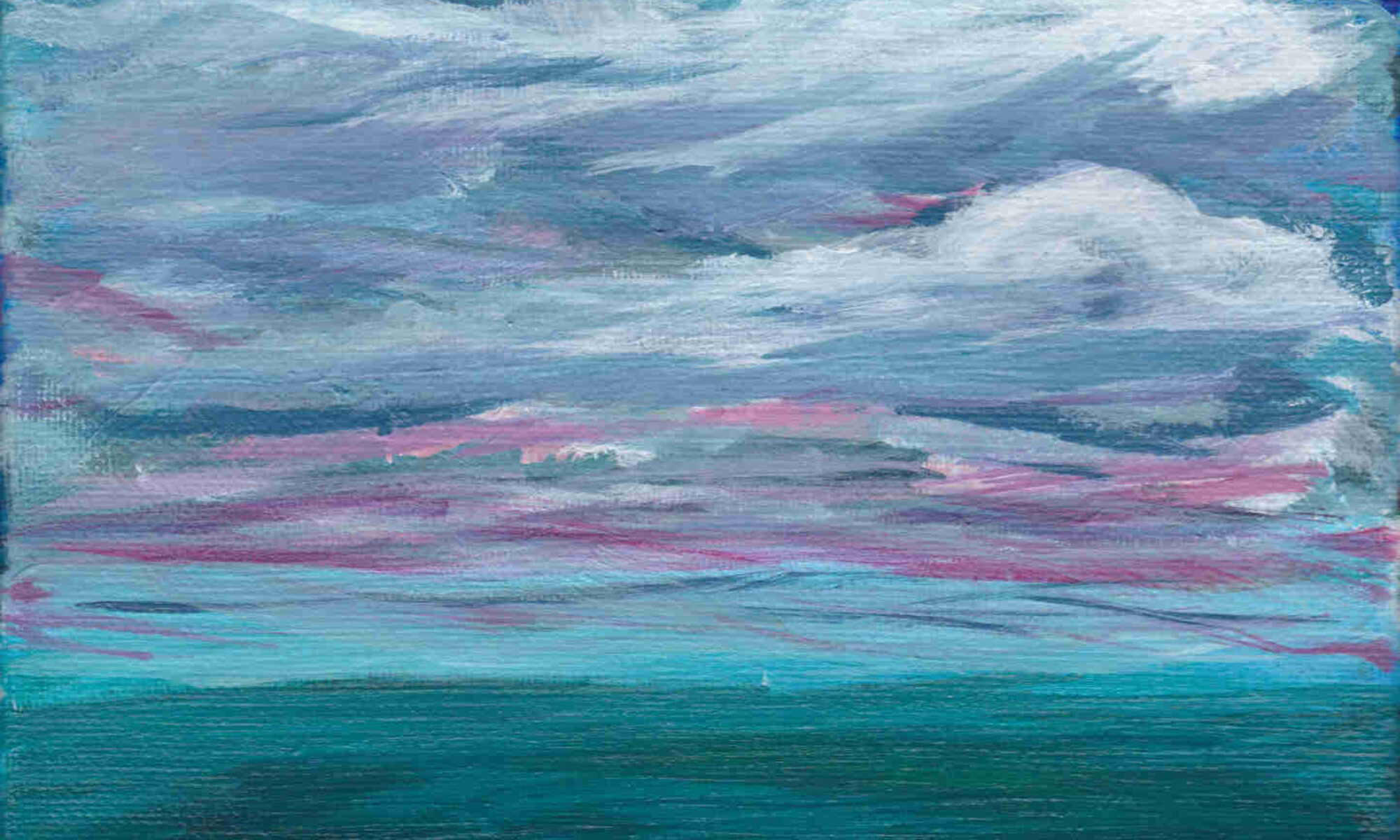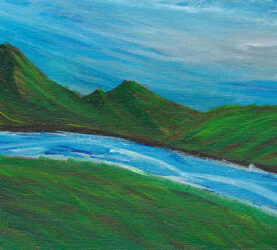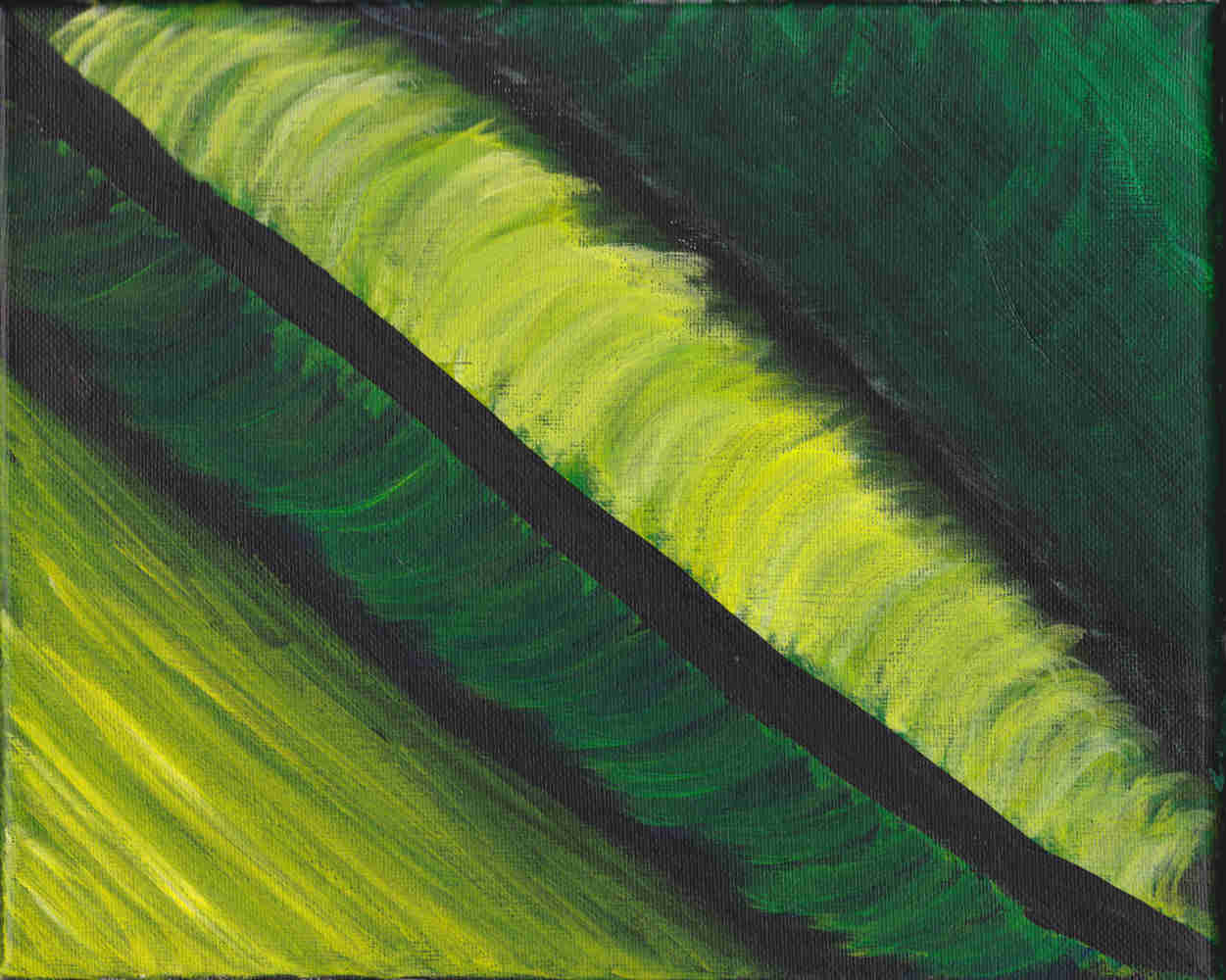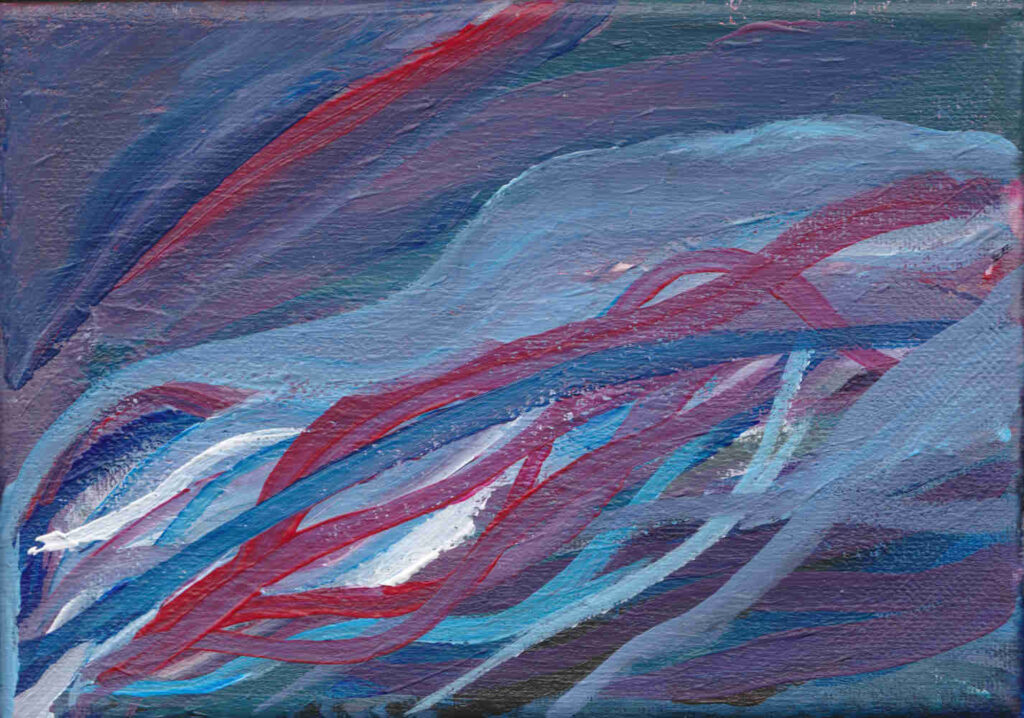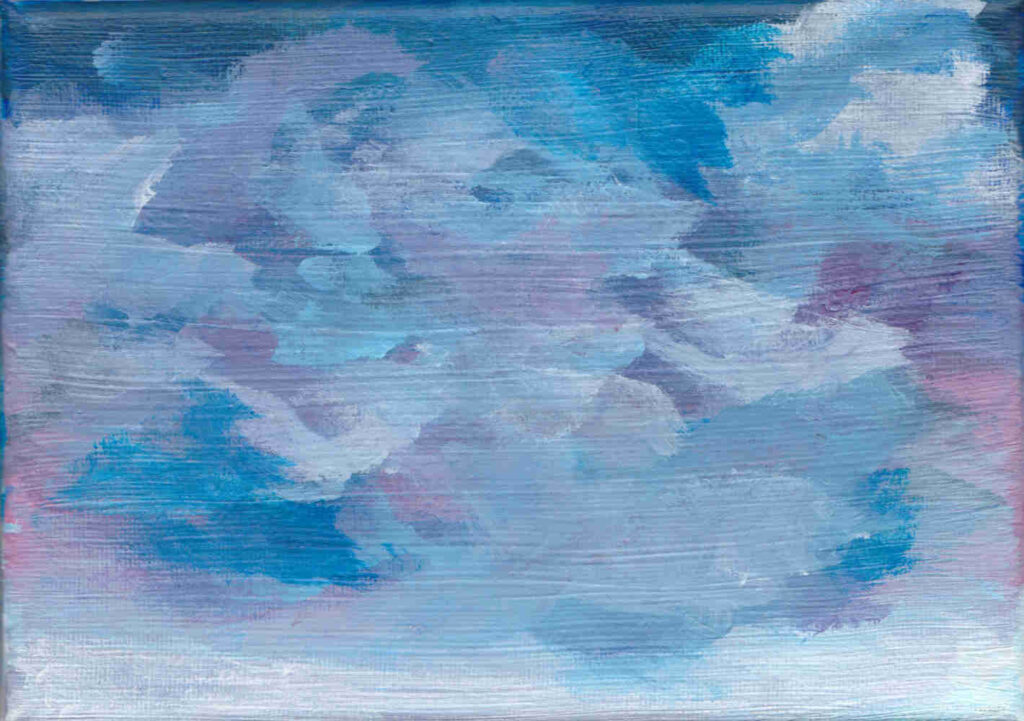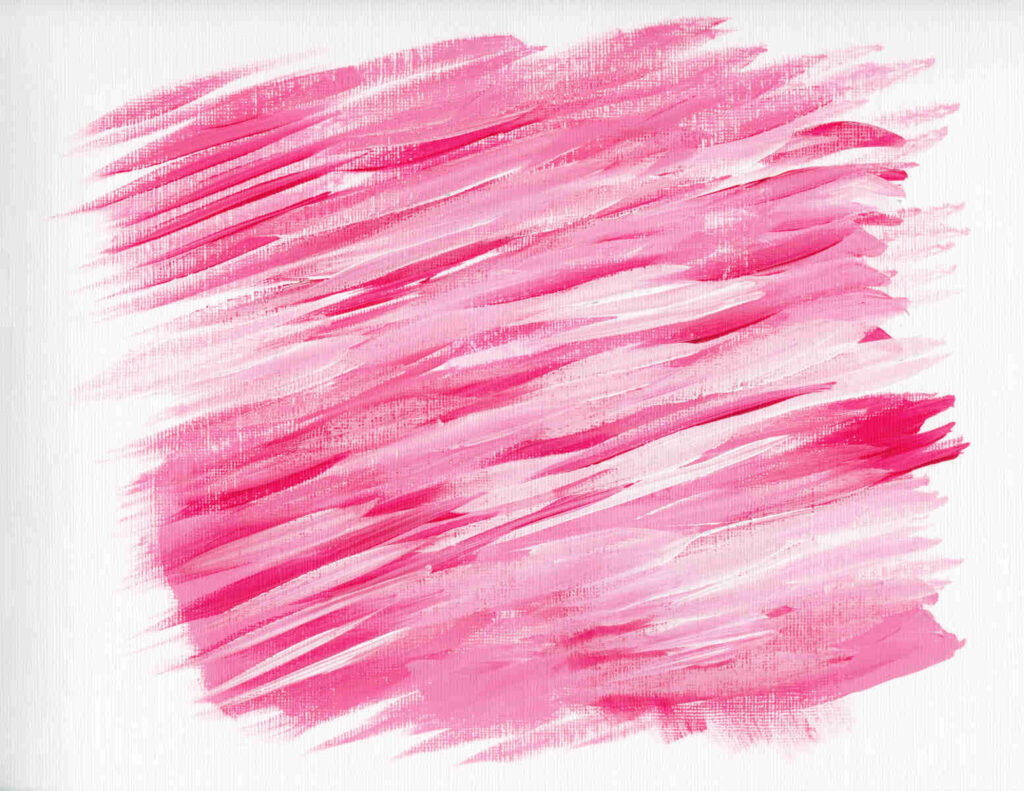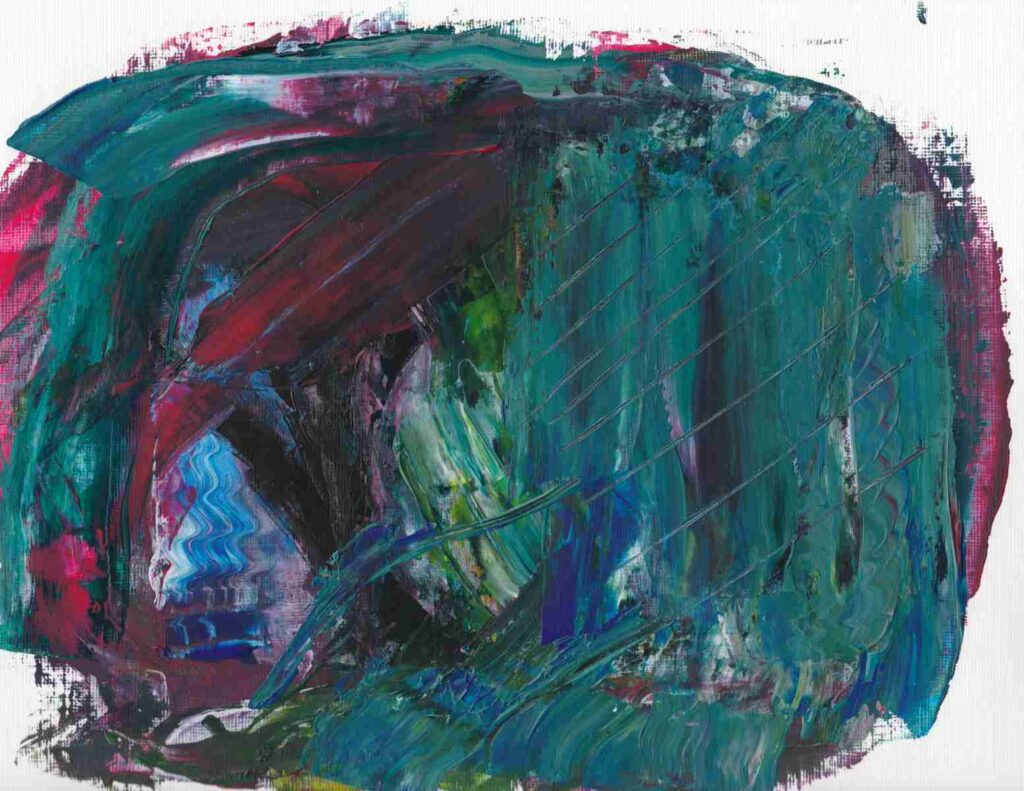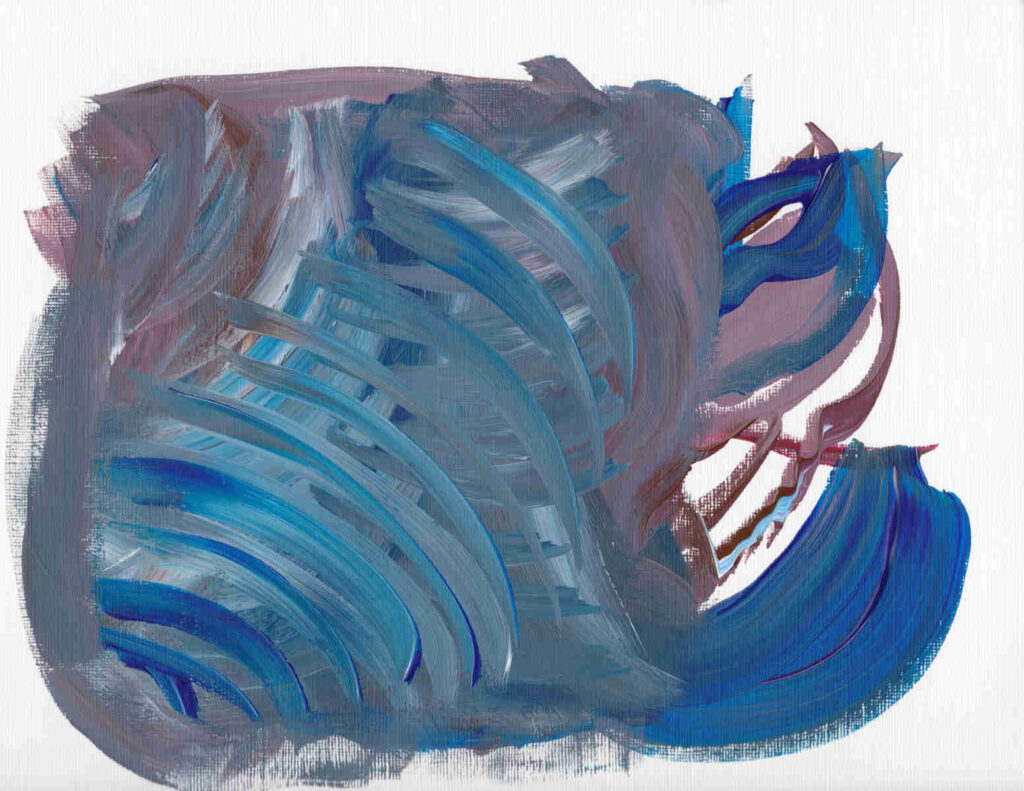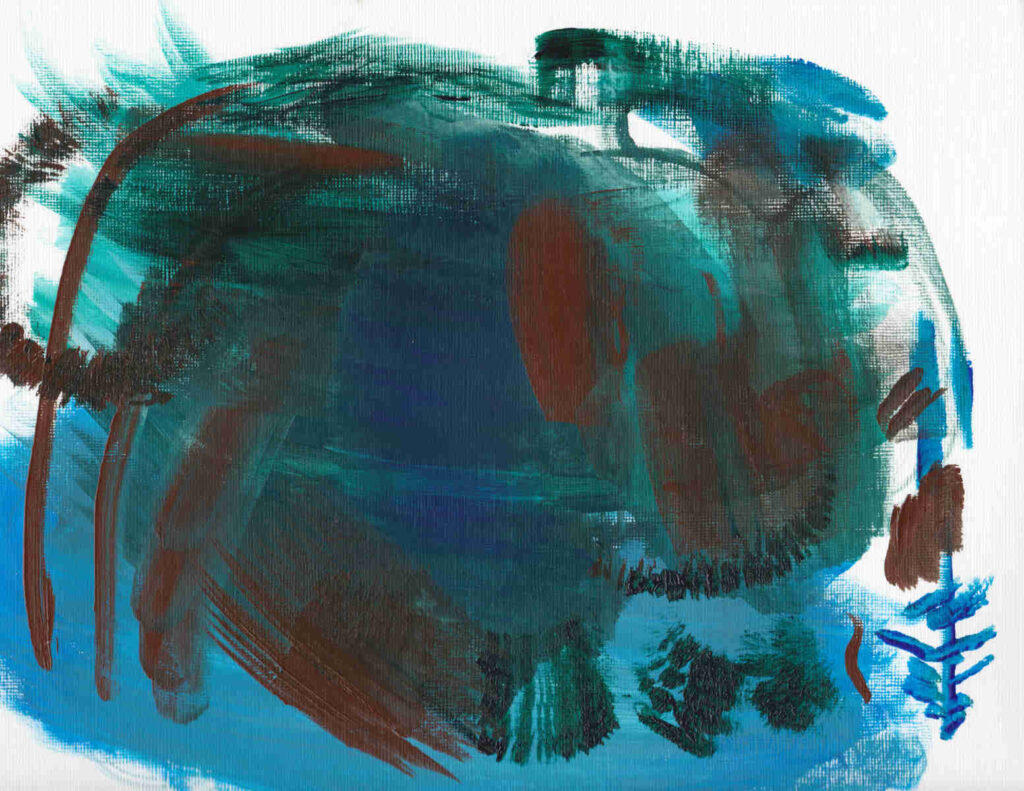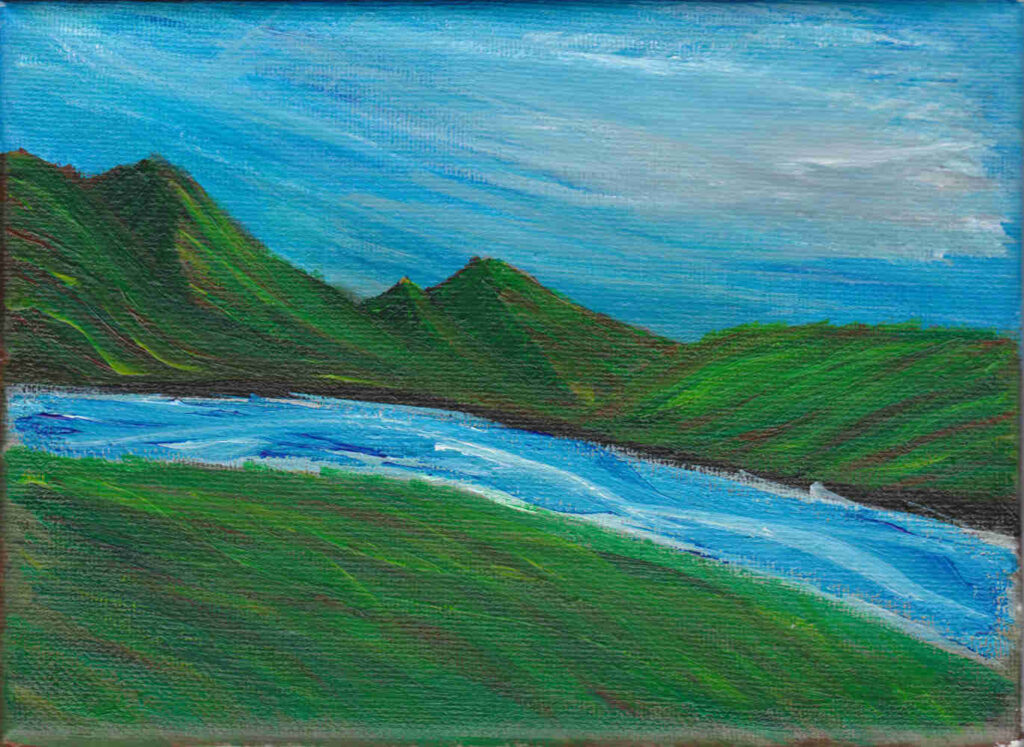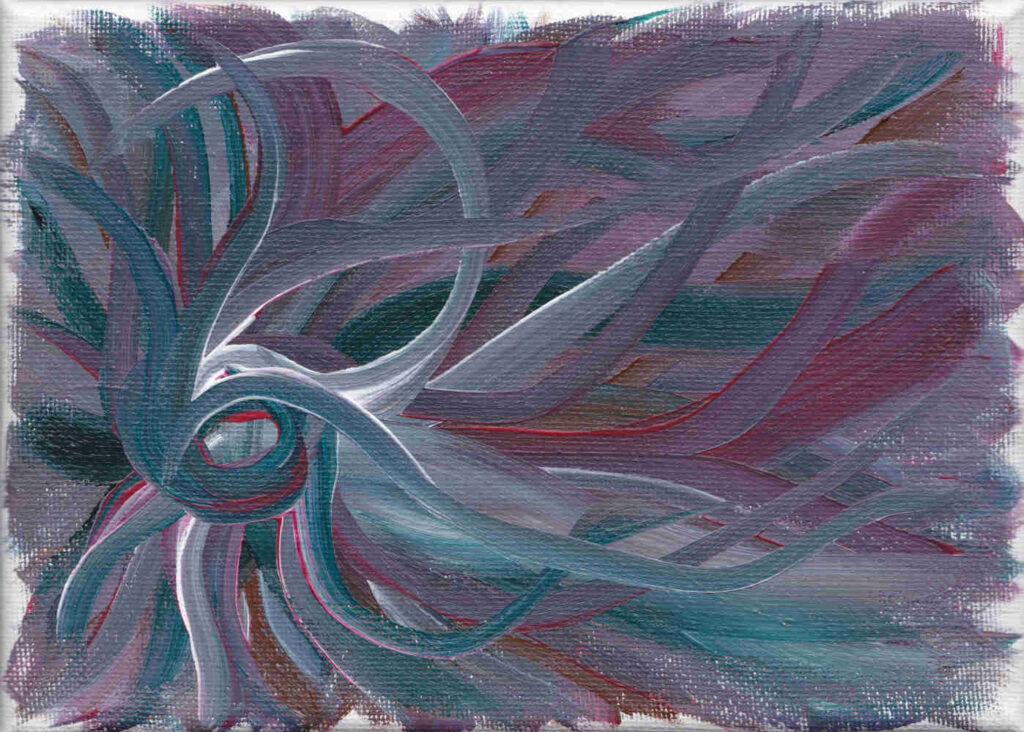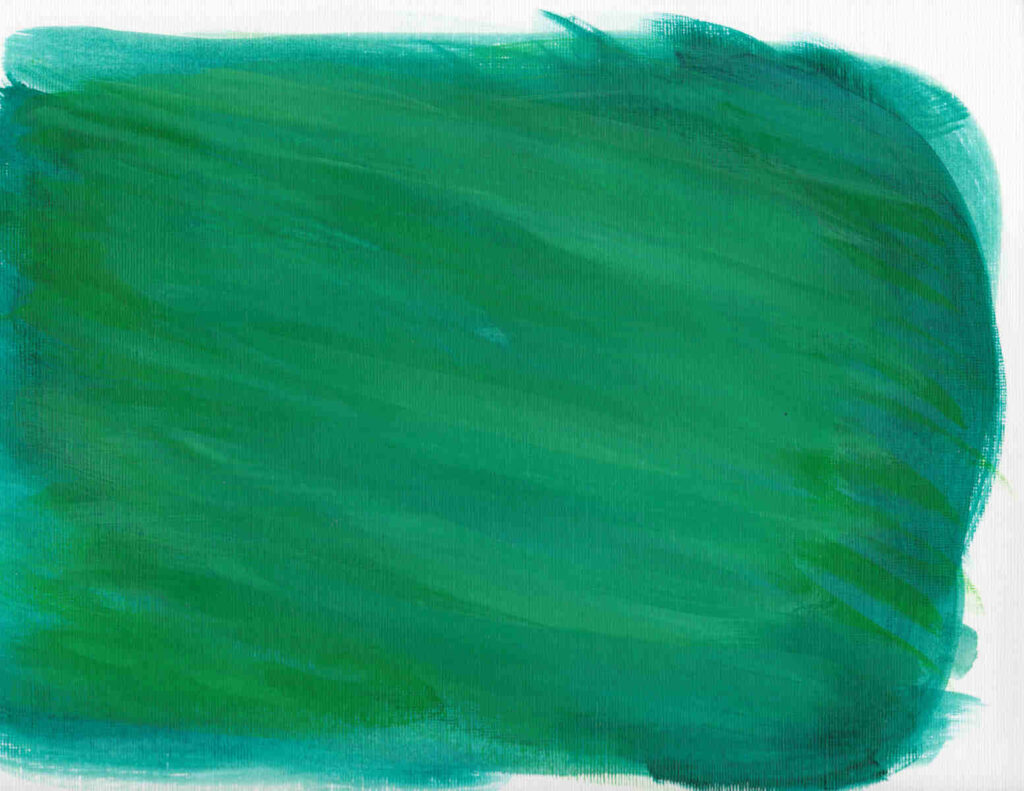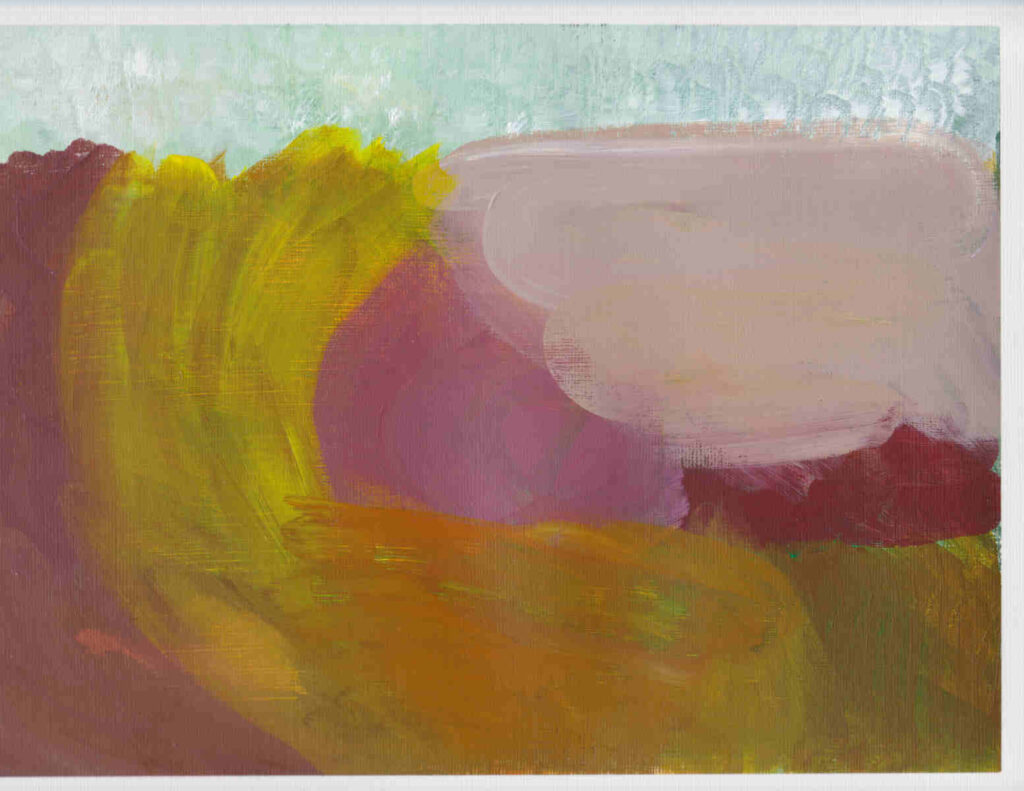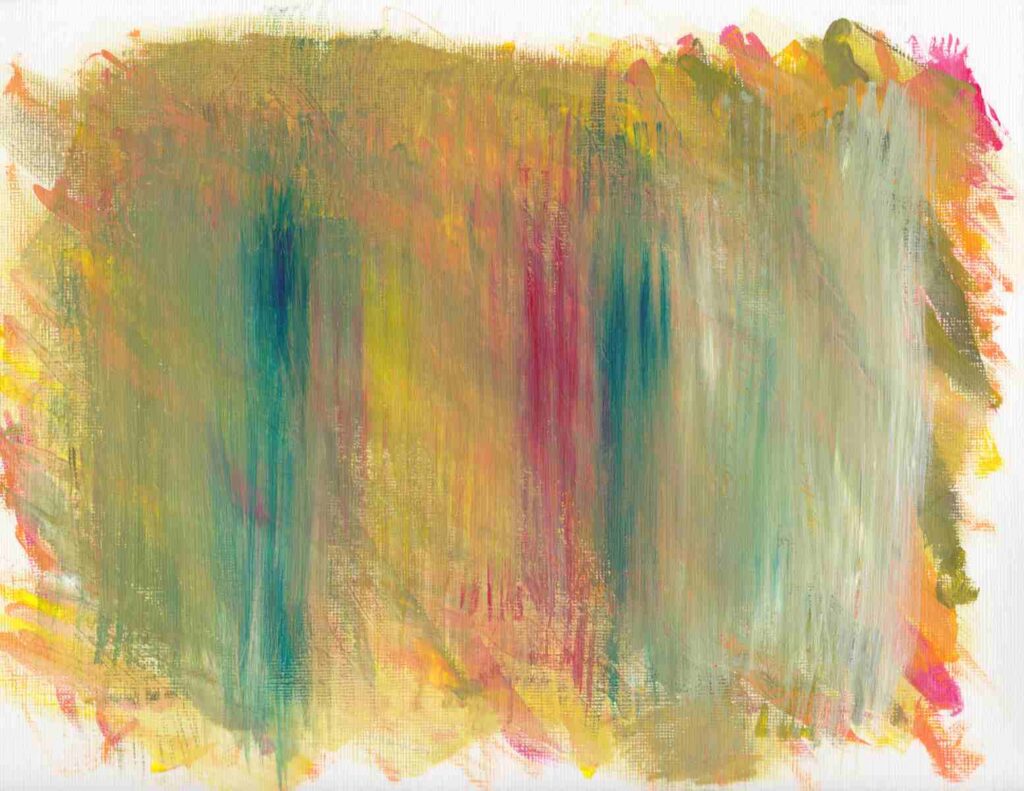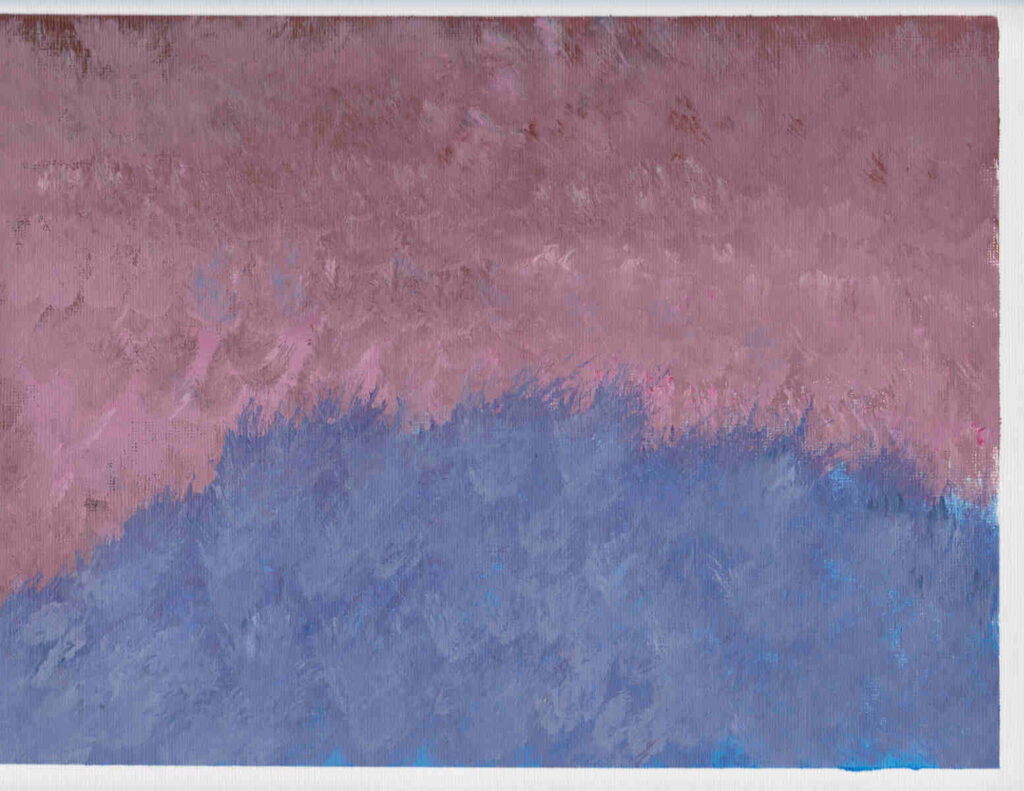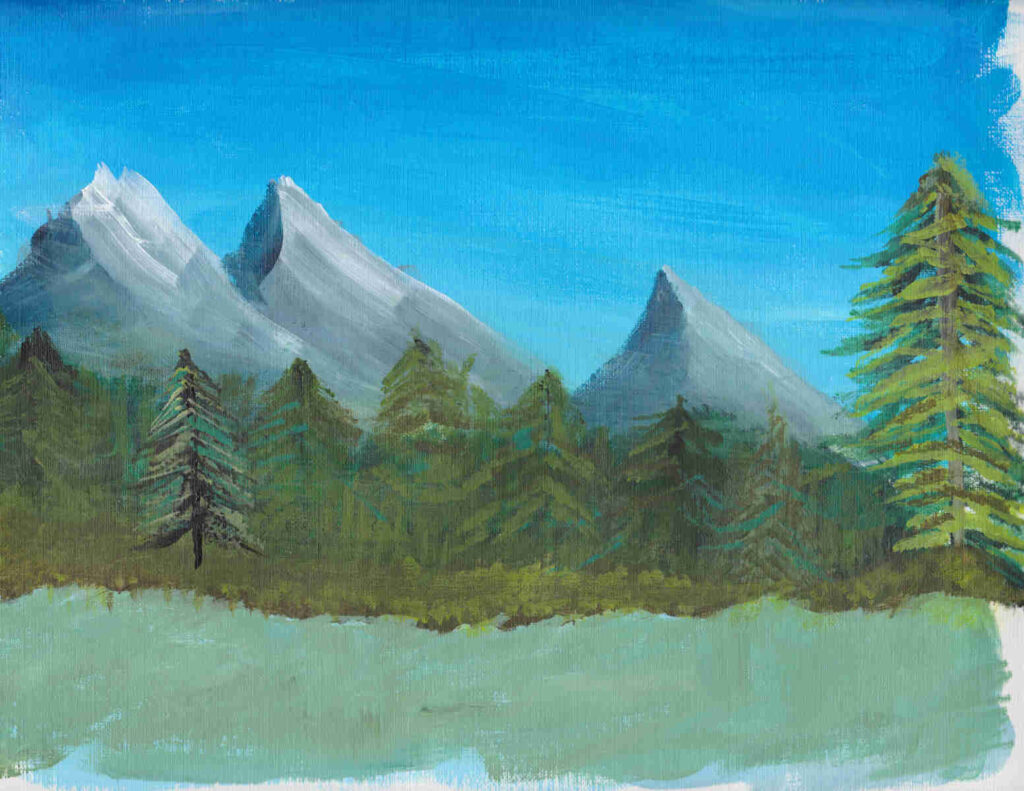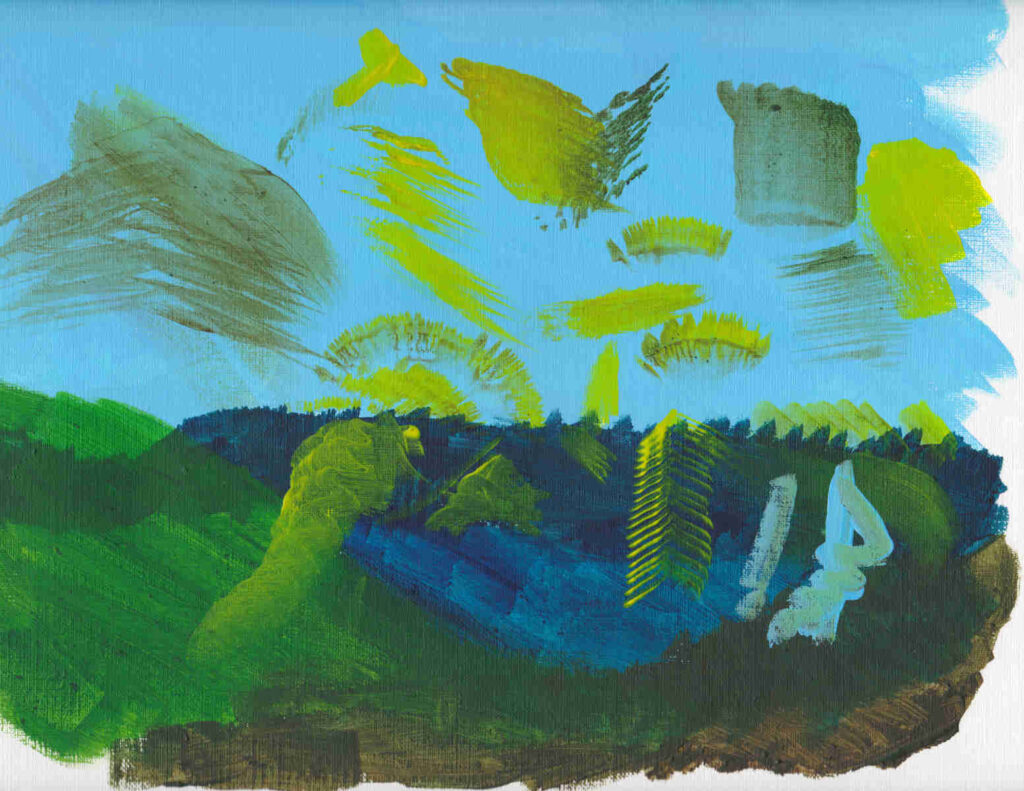Over the weekend I found an artist on youtube that inspired me, and I attempted to copy his style. While my result pales in comparison, I think this piece has a bit more character than other work I’ve done. The video makes it look so easy, which is a testament to Suraj’s skill and experience. So thank you Suraj! I appreciate you putting your work out there for folks like me to learn from.
Underpainting
(cue Underdog Theme Song) Never fear, Underpainting is here!
What is “underpainting” you ask? Our good friend wikipedia says that an underpainting is essentially a painting that goes under a painting to help organize its form and provide layers. Sort of like underpants. Underpants Painting. Nice. I suppose this makes sense, most of us would seldom venture forth without underpants of one sort or another. Why wouldn’t we do the same for our artwork?
On the other hand, isn’t it strange to craft a whole painting, only to cover that painting with a better painting? Whats the point? Just do the better painting. What is this, English class?
Actually yes, now that you mention it. This is exactly like writing a rough draft in English class. Make an outline and develop the structure before adding the supporting details and beautiful flourishes. Give your painting some bones! Understand that beautiful work does not spring forth fully formed like Venus on her shell. Even with five minutes on the clock Picaso wouldn’t skip this step, so why would you?
Therefore, let us hereby state our intention to incorporate underpainting into our technique. To add structure and depth to our work. To provide a space for our ideas to develop on purpose. To elevate our skills beyond the realm of providence and chaos. To become, in a word, Artists.
Technique (Subtitle – What is painting and how do I do it?)
Painting is the joyous act of brushing, smearing, dropping, dripping, squeezing, squishing, wiping, washing, pressing, pounding, scraping, scratching splashing, or otherwise applying various indelible substances onto (ideally) properly designated surfaces. When faced with such a variety of available methods, finding a suitable starting point can be intimidating. Luckily, we can always turn to that reliable old workhorse known as the Encyclopedia Britannica (remember them?) to show us the way.
Fun Fact: The Encyclopedia Britannica was in continuous print for over 240 years before being killed by the internet and reincarnating into its current online form in 2012.
–NPR News
Slightly Related Fun Fact: The Society for the Diffusion of Useful Knowledge existed from 1826 to 1848 with the purpose of “publishing information to people who were unable to obtain formal teaching”. Interesting topics for discussion (if you’re in to that sort of thing) include the exportation/imposition of western culture throughout the world, religious vs secular schools of thought within the cultural marketplace of ideals, and possible connections to steampunk pop culture.
According to the Encyclopedia Britannica there are exactly thirty two painting techniques, which can be grouped according to 1. “devices” that create three dimensional illusions, 2. methods of paint application, and 3. types of mediums. Since we have already learned about the mediums (oils, acrylics, and watercolors, oh my!), we can now focus our future efforts on learning “methods (of applying paint)” and “devices (to create illusions)”.
There are certainly more effective ways to perform a systematic study of painting technique. Feel free to seek them out if you like. Find those wayward threads in the sweater of your curiosity and pull on them until all the worlds knowledge stands naked before you. In the meantime, I’ll be here to paint, and learn, and share.
And remember to have fun!
Learning Curve
Every blog I’ve read, every video I’ve watched, every tutorial I’ve found, every single one, all of them end up with beautiful, amazing, and inspiring work. This is not that work.
To be fair, these items each were created using left-over paint that I didn’t want to waste. If nothing else, I learned that Phthalo Green Blue is a color best used sparingly. I have also been reminded that I am still learning how the brushes move the paint on the paper which, arguably, is an important thing for a painter to know.
Put your hobbies to work.
Today I learned how to set up an online store to put my art on the market. To be more accurate, this has been (and will be) an ongoing project, but I thought I would chronicle the experience for posterity. Maybe someone will find this useful someday. Perhaps as a guide for how to do things, or possibly an example of how not to run a business. The important thing is that I have something to do that isn’t watching the tail end of our year Two Thousand Twenty grind me into a paste (although I heard that’s how they used to make “Mummy Brown“).
A smarter man than I might start by investigating consumer trends, hedonic pricing, or market saturation. Bully to that, I say! What kind of artist puts the cart of sound business practice before the horse of inspiration? Its the “Field of Dreams” of business plans, what could possibly go wrong?
On a separate note, today I also learned that “Hobby Loss” is a thing. Essentially, a “hobby” business such as this silly little endeavor is not allowed to claim losses in excess of any income generated. Three cheers for not committing tax fraud!
Lesson 1: Find a hobby.
The most important part of the whole exercise is to find something interesting to do. Search your passions, find your inspirations, navigate your feelings, blah, blah, blah. The “what” here doesn’t matter, and doesn’t even have to be consistent. Just get out there and try things. Eventually you’ll find something that makes sense to you.
I chose painting because it is, at its heart, not a very complicated activity. It doesn’t require a whole lot of complicated and specialized tools to begin, and it is rich with history, lore, and jargon to satisfy my inner nerd. It also doesn’t seem to take up too much space. For now anyway.
It remains to be seen whether I will stick with this one, or if painting will join my long list of fondly remembered past hobbies. Woodworking and other fabrication hobbies need space and equipment that I don’t have, programming and electronics didn’t hold my interest as much as I’d hoped, music doesn’t call to me like it used to, rock climbing and hiking isn’t so fun now that I live in Texas where its always hot, cooking triggers my inherent scatterbrained tendency toward clutter…
My point is that there are lots of different things out there, so don’t expect that you’ll find your perfect hobby straight off. If you do, congratulations, you’re amazing. For the rest of us, be prepared to embrace change as you grow. Be open to learning from your failures as much as your successes.
Good Luck!
Competence Hierarchy
I have two paintings to share today, which is exciting because they are my first paintings on actual canvas! Up until now I have been using canvas paper, which as best I can tell is a decent low-cost support for beginners. I also learned the term ‘support’, which is a highfalutin way of saying ‘whatever it is you’re painting on’. To be fair, this term is how we painters (see what i did there?) distinguish between what you are painting on (the support) from what you are painting with (the medium). I also learned the term highfalutin, which is your mid 19th century slang term of the day.
“Too often, however, an artist’s impatience, lack of money, and incomplete understanding of the role of a properly prepared painting surface results in a painting that eventually requires major conservation or simply self-destructs.”
https://www.trueart.info/?page_id=181
Given my impatience, lack of money, and complete ignorance of properly prepared painting surfaces, there is apparently a good deal I’ll need to learn before producing work that won’t fall apart when the storms come. I think this lesson is a good one though, since learning what you don’t know is the first step towards competence. Here is a website I found (quoted above) with a good deal of useful information about materials. This site is actually part of an old textbook written by Steven Saitzyk.
Friday the 13th!
Always a fun day. Don’t have much to say, but painted a bunch anyway. Hopefully some of these are okay.
Expanding the tool set
This new hobby of mine has been going on for about a week now, and I have been studying up on the many tutorials, blog posts, and youtube channels that the internet has to offer. I did not document the search as well as I should have, however I will do my best to give credit to the amazing sources that have taught and inspired me over the past week. Thank you for taking the time to create these resources that have helped me learn.
- Bob Ross needs no introduction, so all I can say is that the Joy of Painting is timeless.
- Chuck Black Art inspired me with this video, and the plethora of content posted on his channel.
- There is a good deal of info out there about painting surfaces, including this straightforward summary from Smart Art Materials.
- The Spruce Crafts has a good rundown of the basic colors that make up any starter palette.
- Here is an interesting history of common pigments artists have used over the years.
In addition to hitting the 21st century books, I have also picked up a few new pieces of equipment (listed below) that will hopefully enhance my painting experience. Thank you Jerry’s Artarama for giving me a 10% discount and this fancy VIP membership card.
- Strathmore Acrylic Paper, 246lb, Linen Finish, 9″x12″, 10 sheets. Slightly heavier and slightly more expensive canvas paper then what I bought last time.
- Creative Inspirations Stretched Canvas Super Value Pack of 5 (one set 5″x7″, and one set 8″x10″). Yes, I’m moving into the world of stretched canvas! Very exciting, slightly intimidating, and not so slightly more expensive than canvas paper.
- SoHo 8″x12″ True Color Peel Off Butcher Tray Palette. Essentially a plastic tray that is supposed to be easier to clean than the cheap plastic palette I purchased before. Can confirm, dried paint wipes up easily with a paper towel and a bit of pressure.
- Golden Gesso (aka bright white acrylic primer). I’m starting small with an 8 oz jar, since a gallon is probably more than I want to have in my kitchen at the moment.
- Masonite 12″x18″ Hardboard Panel, to use as a work surface to protect my desk from the paint splotches I’ve been spilling all over the place.
- More Brushes!
- SoHo Urban Artist 008 Fan. I think this brush is intended for oil paints, since the bristles seem to clump up with my water based acrylic paint.
- SoHo Urban Artist 010 3/4″ Oval Wash. A good complement to the 3/4″ Wash from Princeton Art & Brush.
- Creative Mark 1″ Primer. Haven’t used it yet, but it was right next to the gesso, so I figured it would be good to have.
- More Paint!
- SoHo Urban Artist 75mL acrylic, Cadmium Orange (140), Phthalo Green Blue (470), and Burnt Umber (530).
- I also stole a coffee mug from the kitchen for a brush holder, and the roll of painters tape from my closet.
I should probably note that I am not affiliated with any of the companies or products I’ve been talking about, and I have spent my own hard earned money on all of it. Three cheers for transparency.
Technical Difficulties
Had to upgrade my web hosting service this week to accommodate all this new activity. Learned a whole bunch about DNS (Domain Name Servers), including this website (https://dnschecker.org) which displays whether your DNS changes have populated yet.
Adventures in Painting (Day 3)
Two times art today. Tried to make a landscape. Didn’t work. What did work was that I figured out how to scan the pictures with my printer (Canon MX920) onto a flash drive and transfer the files onto my computer. These files are rather large, so I also learned how to reduce the file size with GIMP (GNU Image Manipulation Program). This is essentially an open-source and free knock off version of Adobe Photoshop. After installing this program, I was able to reduce the file sizes with the following procedure:
1. Open up the image file in GIMP
2. Select ‘Image>Scale Image’ and change the Width and Height to the desired dimensions. I used 5.333 in x 4.000 in., then click ‘Scale’
3. Select ‘File>Export As’, select the new file name and location, then click ‘Export’.
4. In the next window, set the ‘Quality’ slider between 20-30, then click ‘Export’.
